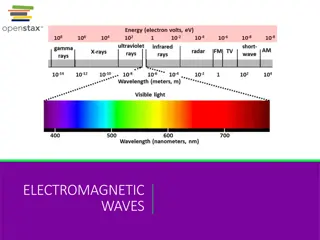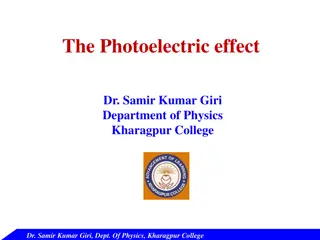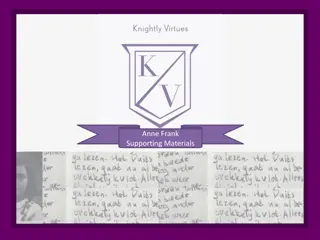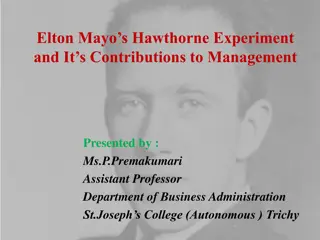
Understanding the Frank Hertz Experiment
Explore the Frank Hertz Experiment demonstrating discrete energy levels through electron trajectories in a vapor-filled tube. Learn how the accelerating voltage affects electron behavior and discover the results of inelastic scattering processes during the experiment.
Download Presentation

Please find below an Image/Link to download the presentation.
The content on the website is provided AS IS for your information and personal use only. It may not be sold, licensed, or shared on other websites without obtaining consent from the author. If you encounter any issues during the download, it is possible that the publisher has removed the file from their server.
You are allowed to download the files provided on this website for personal or commercial use, subject to the condition that they are used lawfully. All files are the property of their respective owners.
The content on the website is provided AS IS for your information and personal use only. It may not be sold, licensed, or shared on other websites without obtaining consent from the author.
E N D
Presentation Transcript
The existence of discrete energy levels were demonstrated by Frank Hertz in this Experiment In the experiment, an electron beam is produced by thermionic emission from a filament. The electrons are accelerated, pass through the vapor, and are then retarded by a few volts before collection at the anode.
Experimental Arrangement Glass tube A Cathode to emit electrons A Grid to accelerate electrons
WORKING As the accelerating volt- age increases, the anode current increases because the electron trajectories are more focused, and the electrons are deflected less by scattering from the atoms of vapor in the tube. The anode current is observed to rise faster than linearly with Va . The final energy of electrons that reach the grid is the initial energy, eVa , minus energy lost in collision.
Results As an electron passes through the vapor, it gains energy in the accelerating field produced by . At the point where the electron s energy exceeds excitation , inelastic scattering becomes possible, and the electron scatters and loses almost all of its kinetic energy so that the process begins again. Thus multiple inelastic scatterings are possible as an electron moves from cathode to grid.






















